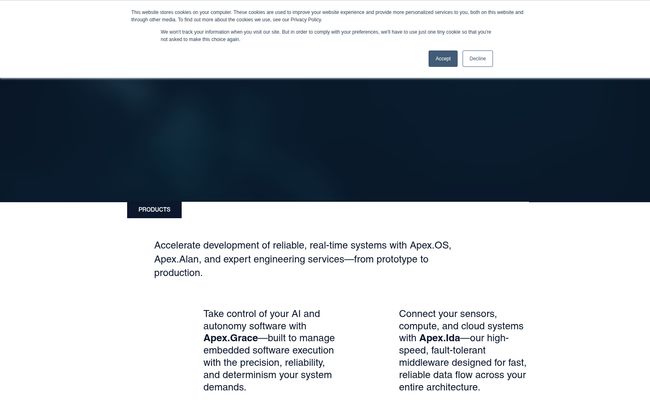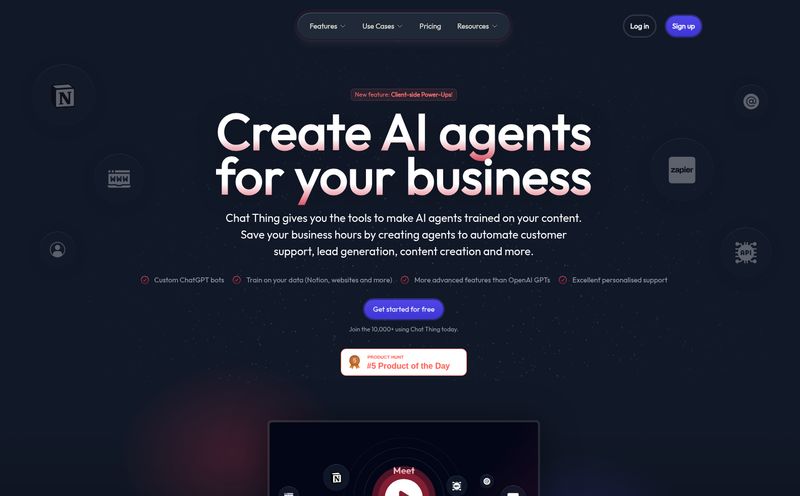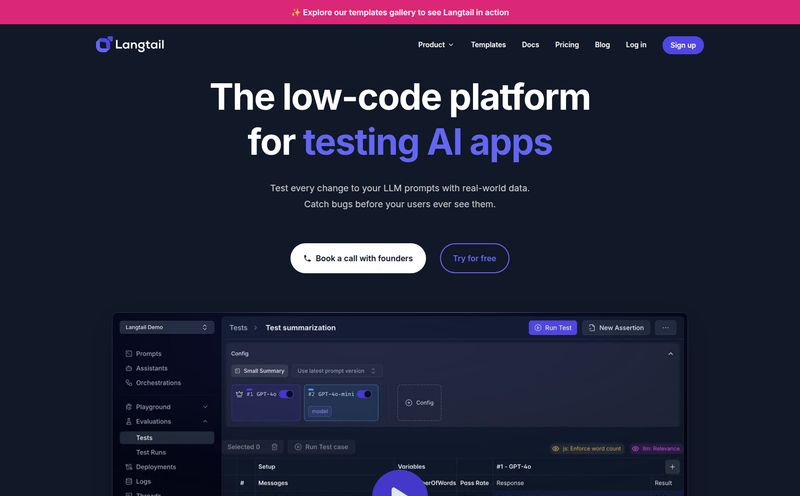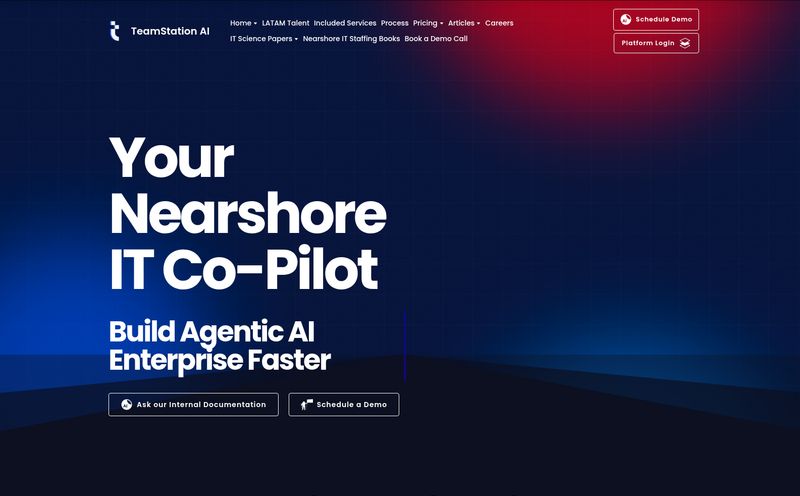I’ve been in the SEO and tech world for years, and my inbox is a constant flood of pitches for the “next big thing.” Usually, it’s another SaaS platform that promises to revolutionize my workflow with AI. Yawn. But every so often, something genuinely different lands on my radar. Something that isn't just about making things faster or shinier, but about making them fundamentally safer.
That’s the feeling I got when I started digging into Apex.AI. This isn't your typical startup chasing viral growth. They're tackling a much harder, and frankly, more important problem: building the software foundation for autonomous machines that won't, you know, fail at a critical moment. We've all seen the flashy demos of self-driving cars and agricultural robots. What we don't see is the terrifying gap between a cool prototype that works 99% of the time and a production-ready system that you can bet lives on.
Apex.AI lives in that gap. And as someone who has followed the slow, sometimes frustrating crawl of autonomous tech, that’s incredibly exciting.
What Exactly is Apex.AI? (And Why Should You Care?)
At its core, Apex.AI is developing safety-certified, developer-friendly, and scalable software for mobility systems. That’s a mouthful, I know. Let me translate. Imagine you’re building a skyscraper. Your initial designs and 3D models are your prototype. They look great, but you can't build the real thing with just blueprints. You need a foundation of solid bedrock, steel beams that have been tested and certified to handle immense stress, and an electrical system that won't short out.
In the world of autonomous vehicles, many projects are still at the blueprint stage, often using amazing tools like ROS (Robot Operating System) for rapid development. But ROS, for all its strengths in research, wasn't originally built for the harsh realities of a production vehicle. Apex.AI is the company that comes in to provide the certified steel beams and the failsafe wiring. They take the principles and APIs that developers already know from the ROS ecosystem and re-build them from the ground up for absolute reliability.
A Look Inside the Apex.AI Toolkit
So what are these “steel beams” made of? Their product suite is a layered stack designed to handle the whole process, from low-level operations to high-level autonomous functions.

Visit Apex.AI
Apex.OS: The Hardened Core
This is the bedrock. Apex.OS is a real-time operating system that has been safety-certified. The key word here is determinism. In a normal computer, if you ask it to do something, it’ll get to it when it gets to it. For a self-driving car calculating whether to brake, “when it gets to it” isn’t good enough. Determinism means that operations happen in a predictable, repeatable timeframe. Every single time. This is the non-negotiable heart of any safety-critical system.
Apex.Middleware: The Nervous System
If Apex.OS is the brainstem, handling involuntary, critical functions, then Apex.Middleware is the central nervous system. It’s the connective tissue that ensures reliable data flows from all the sensors—the eyes and ears of the machine—to the compute modules and even up to the cloud. It’s what lets the different parts of the system talk to each other without dropping messages or getting their signals crossed.
Apex.Autonomy and Apex.CI: Accelerating Development
Building on top of that solid foundation, Apex.Autonomy provides ready-made building blocks for things like perception and planning. Think of them as pre-fabricated, certified components that save developers from reinventing the wheel. And Apex.CI (Continuous Integration) provides the tools to build, test, and deploy all this complex software in a streamlined way, which is a massive challenge in itself when safety is on teh line.
Who is This For? The Surprising Reach of Apex.AI
You’d think a company this specialized would be targeting a tiny niche. But the need for safety-critical software is exploding. Apex.AI is already working across automotive, agriculture, medical, and defense industries. What's most telling, for me, isn't their client list, but their investor list. We're talking about Toyota, Volvo Group, Jaguar Land Rover, Continental, and Airbus. These aren't just venture capitalists throwing money around; these are strategic industry giants. They aren't just investing in Apex.AI; they are its future customers. They need this technology to work. That’s about the strongest vote of confidence you can get.
The Elephant in the Room: Let's Talk Pricing
Okay, so you're sold on the tech and want to try it out. You click on their pricing page and... get a 404 error. Don't worry, your internet isn't broken. There is no public pricing page. And honestly, that’s to be expected.
This isn't a $10/month subscription service. This is enterprise-grade, high-stakes software where the cost is deeply tied to the scale of the project, the specific safety certifications required (like ISO 26262 in automotive), support levels, and any custom engineering services. I’ve seen this model a hundred times with this kind of B2B platform. The price is “it depends.” You have to contact them, discuss your project, and get a custom quote. It’s a hurdle for small teams, for sure, but it’s standard practice in this space.
What I Like and What Gives Me Pause
No tool is perfect, and after spending some time with their materials, a few things stand out to me, both good and bad.
The Good Stuff
The laser focus on safety is everything. It’s not a feature; it's the entire reason they exist. In a world full of AI hype, this grounding in real-world engineering is refreshing. I also appreciate their developer-centric approach. By basing their APIs on ROS 2, they’re meeting developers where they are, which drastically lowers the learning curve. Finally, the fact that they offer engineering services even if you don’t use their core OS is a sign of real confidence. They’re not just selling a product, they're selling expertise.
The... Considerations
The lack of transparent pricing is a double-edged sword. While understandable, it makes it hard for smaller players or researchers to even know if it's a viable option. Another point is that their website content, while thorough, is dense. It’s written by engineers, for engineers. If you’re not familiar with terms like “embedded systems” or “real-time processing,” you might feel a little lost. It’s not a critique of the quality, just an observation on its accessibility.
Frequently Asked Questions about Apex.AI
Is Apex.OS just another version of ROS?
Not exactly. Think of it as a close cousin, but one that went through rigorous training to become a certified bodyguard. It uses APIs familiar to ROS 2 developers, but its underlying architecture is rebuilt from scratch for determinism and safety certification, making it suitable for production systems, not just R&D.
Can I use Apex.AI for my commercial drone startup?
It's quite possible. Their focus is on “mobility systems,” which primarily points to cars and trucks, but the core principles apply to any autonomous machine where failure is not an option. Drones used for critical infrastructure inspection or medical delivery would be a perfect fit for this kind of safety-oriented software.
So, how much does Apex.AI actually cost?
There's no public price list. As enterprise software for safety-critical applications, pricing is determined on a case-by-case basis. You’ll need to contact their sales team directly for a quote based on your specific needs, project scope, and support requirements.
Do I have to use their entire software stack?
It seems not. Their offerings appear modular, and they explicitly state that their engineering services are available to help architect and optimize systems, whether you're building with Apex.OS or not. This flexibility is a significant advantage.
Who are the main competitors to Apex.AI?
The competitive field is complex. It includes established players in the real-time operating system (RTOS) space like BlackBerry QNX and Wind River, as well as the massive in-house software development efforts at major automotive and tech companies. Apex.AI’s edge is its unique combination of ROS-friendliness and stringent safety certification.
Final Thoughts
In an industry obsessed with moving fast and breaking things, Apex.AI is a reminder that when it comes to mobility and automation, you can't afford to break things. They’re not building the flashy user interface or the next viral feature. They're building the foundation. The quiet, reliable, invisible part that simply has to work, every time.
For any company, developer, or engineer working on an autonomous system that will interact with the real world, Apex.AI should be on your shortlist. They are one of the few companies I've seen that truly understands that the future of autonomy won’t be built on hype, but on trust.
Reference and Sources
- Apex.AI Official Website
- Robot Operating System (ROS)
- The Eclipse Foundation
- ISO 26262 - Road vehicles Functional safety



